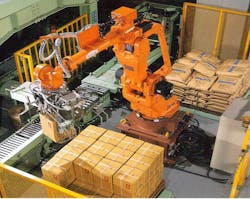The Continuing Rise of the Robots – Industrial Market to Grow 12%
According to a recent market study released by Technavio, the industrial robotics market in the U.S will continue to grow at a CAGR of 12.25% during the forecast period (2016-2020).
The report categorizes the industrial robotics market in the U.S. into four major product segments. They are:
- Articulated robots
- Cartesian robots
- SCARA robots
- Others (delta, parallel, and cylindrical robots)
Articulated Robots
Articulated robots market will grow from $751.4 million in 2015 to $1.28 billion by 2020. The automotive industry primarily drives the articulated robots market for general assembling and material handling functions. Articulated robots are widely used in the manufacturing industries for various applications such as welding, assembling, sealing, material handling, picking, cutting, painting, and spraying.
“Rising complexity in the manufacturing process and miniaturization of electrical and electronic equipment has increased the demand for articulated robots,” explained Bharath Kanniappan, a lead analyst at Technavio. “These robots are increasingly adopted in the other industries such as heavy machinery, and food and beverage.”
Cartesian robots
Cartesian robots are advantageous for their linear movement with a high degree of repeatability, accuracy, and mechanical rigidity. They can move and carry heavy loads, as their payload capacity is consistent and accurate at different locations within the work envelope. They are used in material handling applications, including inspection, assembly, machining operations, surface finishing, adhesive application, water jet cutting, material handling, and welding.
The increased demand for cartesian robots is expected to grow rapidly compared to other types of robots due to its widespread application in the automotive and auto component industries. The demand for these robots is high in the metal industry for cutting, drilling, bending, loading, stamping, welding, casting, forging, and unloading.
“The adoption of cartesian robots is high in the food and beverage packaging industry, which is predicted to extend into other application areas during the forecast period,” adds Bharath.
SCARA Robots
SCARA robots are based on the 4-axis design, and are suited for high-speed assembly, kitting, packaging, and other material handling applications. These robots are widely used in the electrical and electronics industries for performing various applications such as fabrication of electronics and semiconductors, since these processes have high precision requirements that have to be executed at high speeds.
SCARA robots are rugged, fast, and durable. They are highly preferred in the automotive industry for pick and place, welding, and spray painting applications. They are also used for assembling, pick and place, and loading and unloading operations in the food and beverage, and electrical and electronics manufacturing operations. The US companies prefer SCARA robots to obtain high rate of accuracy and precise speed control in production, leading to the steady market growth in the US, according to Technavio.
